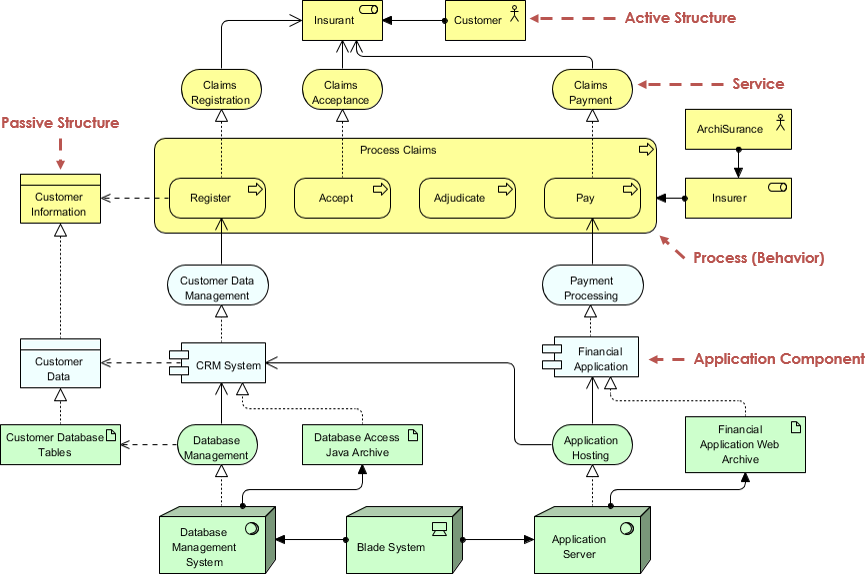ArchiMate has a layered and service-oriented look on architectural models. The higher layers make use of services that are provided by the lower layers. Although, at an abstract level, the concepts that are used within each layer are similar, we define more concrete concepts that are specific for a certain layer.

Each layer in the ArchiMate language (business, application, and technology) has a service concept that answers the “what” of an architecture, whereas underlying processes and components describe the “how” of an architecture. In other words, a service simply describes what _automated functionality is needed in order to complete the process, without specifying the _how. The what or implementation are realized in the underlying process, function or application components.
External vs International View
In the example below, a distinction has been made between “external” and “internal” behaviour of ArchiSurance. The externally visible behavior is modeled by the concept organisational service, which represents a unit of functionality that is meaningful from the point of view of the environment. ArchiSurance has three such organisational services. Within ArchiSurance, these services are realised by one business process: the Process Claims process, which consists of four subprocesses.

Other concepts that can be used for modelling behavior are business functions and business interactions. Business processes, functions and interactions, in turn, may use other services (internal to the organisation, but external to a smaller entity within the organisation).
In the Example above, it also shows the cross-layer relationships integrate the different layers, and how you can depict this in one view. It also shows how the optional notation (B – Business, A – Application and T – Technology) with letters in the upper-left corner is used to distinguish between layers.